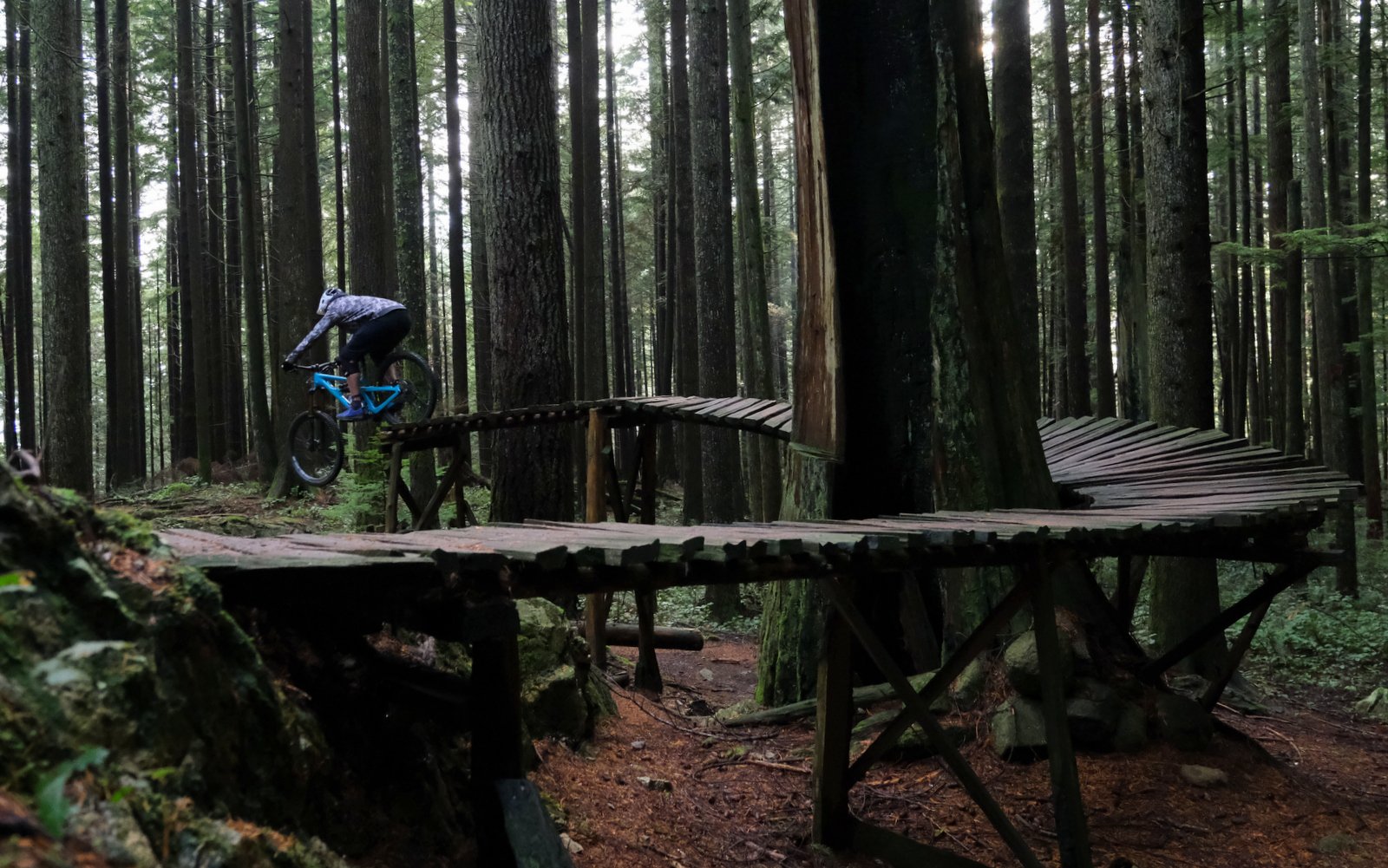
Uncle Dave Review
Yeti SB165: Reviewed
If often feels that life as a bike tester seldom gives you exactly the bike you want to be riding. If you're open to experimentation, this can be a great thing. But as a crotchety old bastard who is more-and-more set in his ways, it can lead to frustration. I mean, what the hell am I going to do with a Yeti designed to fall off mountains, with a price that I don't even want to convert into Canadian Dollars because it will just depress me? This is not the bike I wanted. But, after complaining for months about how beat up I feel after each ride on a bike with shorter travel, maybe it's exactly what I need?
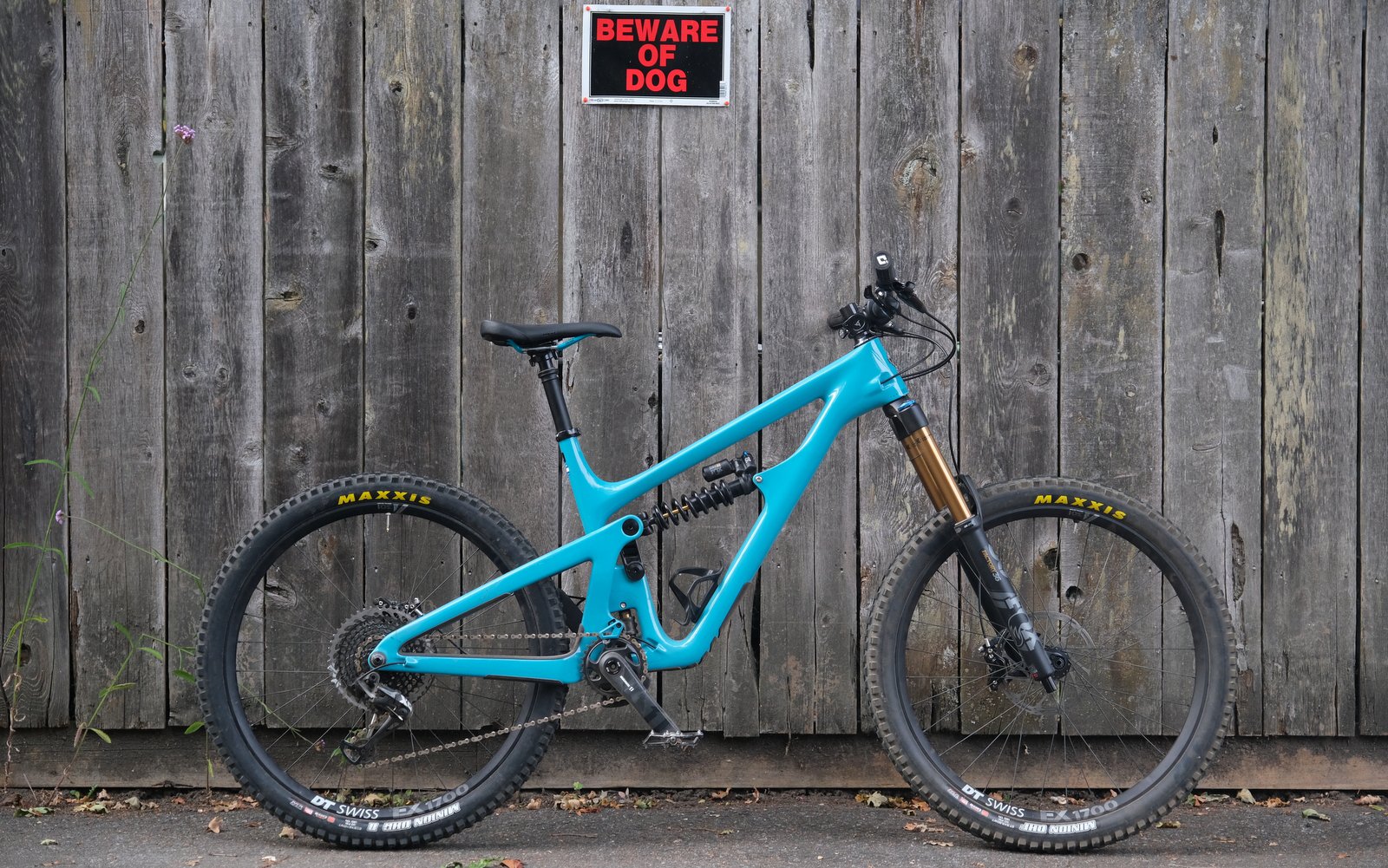
I had to move a ways from my typical alleyway photoshoot location, but it felt just too perfect.
Parts, Specs and Geometry
The version of the bike tested is the T2 spec. That gets you the fancier Turq carbon frame, and a bunch of components that you would expect at this price (US$7,699). That includes such things as Fox Factory level suspension (36 with a Grip 2 damper up front, and a DHX2 in the back), an X01 Eagle drivetrain, a Fox transfer post (w/ 175mm of travel), Code RSC brakes, and DT Swiss EX1700 wheels shod with Maxxis EXO+ Minions (2.5 DHF front, 2.4 DHR II rear). Nothing surprising here. The shifting was good, but after a few months on the new XTR you will notice that it's a little crisper than X01. And whoever rode the bike before me left me with a nasty pair of tears in the rear tire that took a lot of energy to patch and that suggests that this bike could do with more than EXO+ tires* (I'd at least like to see a double down in the rear). But other than these minor gripes, everything worked well.
*this may have been me - Ed.
This test bike is a size Large frame, which is probably a touch small for my height. Although, with a reach of 480mm, it wasn't that short, but still, I wouldn't have sneezed at the 505mm reach of the XL. The head tube is a fairly slack (for me) 63.5 degrees, and the seat tube appears to be a fairly honest 77 degrees. Chainstays are 433mm, and those are the only numbers that seem to be worth worrying about.
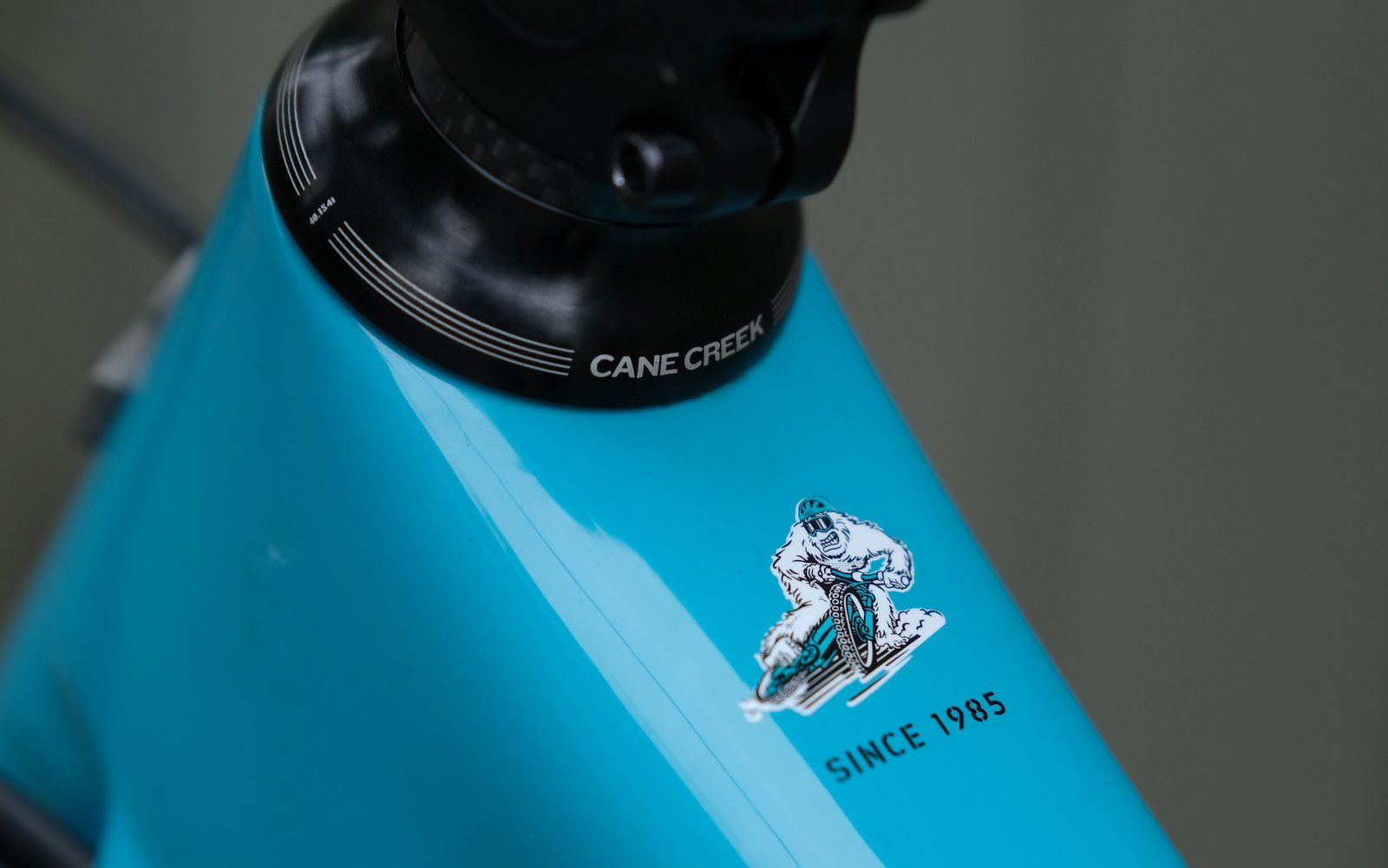
Where should you start with a Yeti? With this little guy?
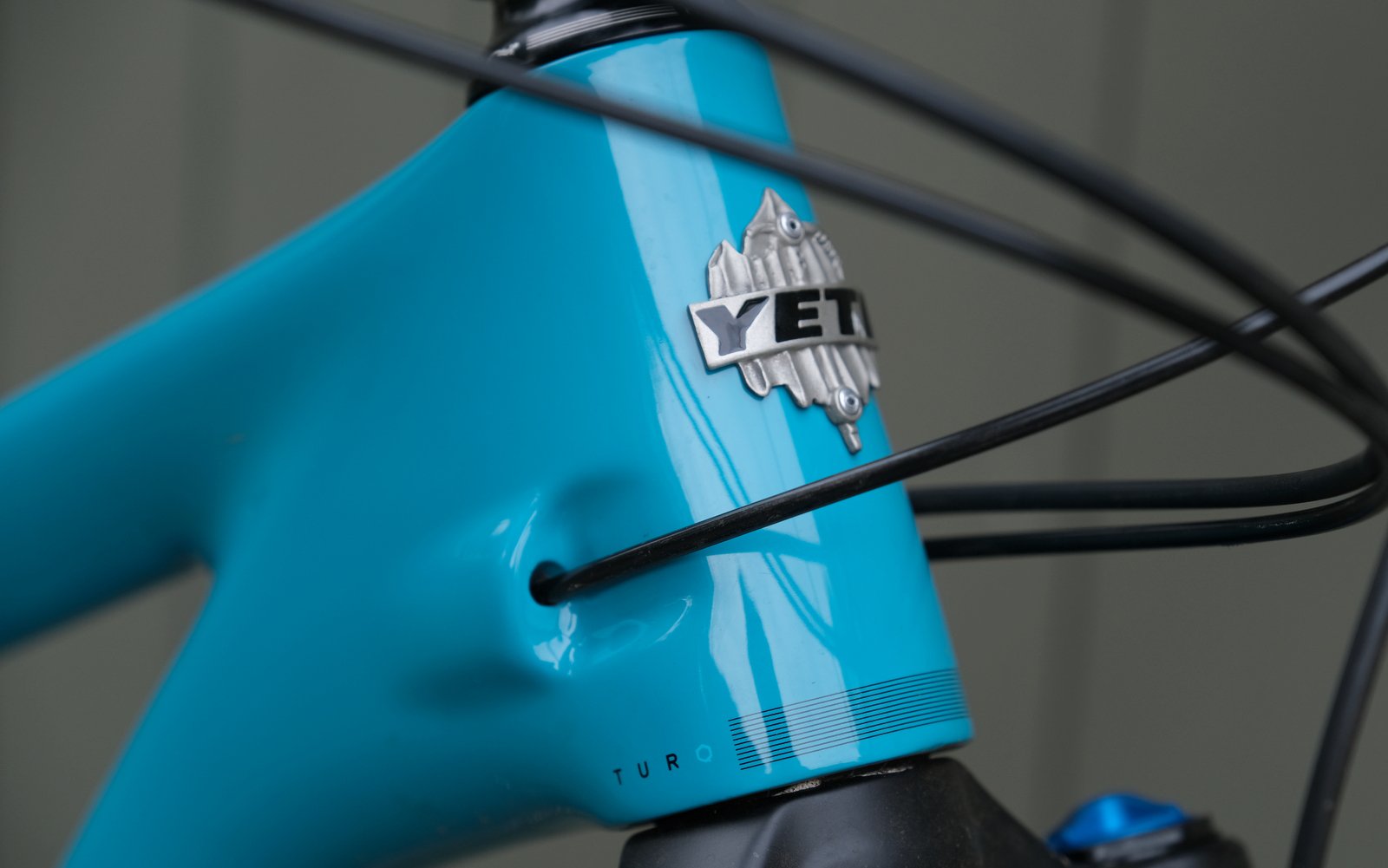
Or the head tube badge?

The "downgrade" from XX1 is about the only difference that I can see to the pricier T3 version...and that saves you a bunch of money.
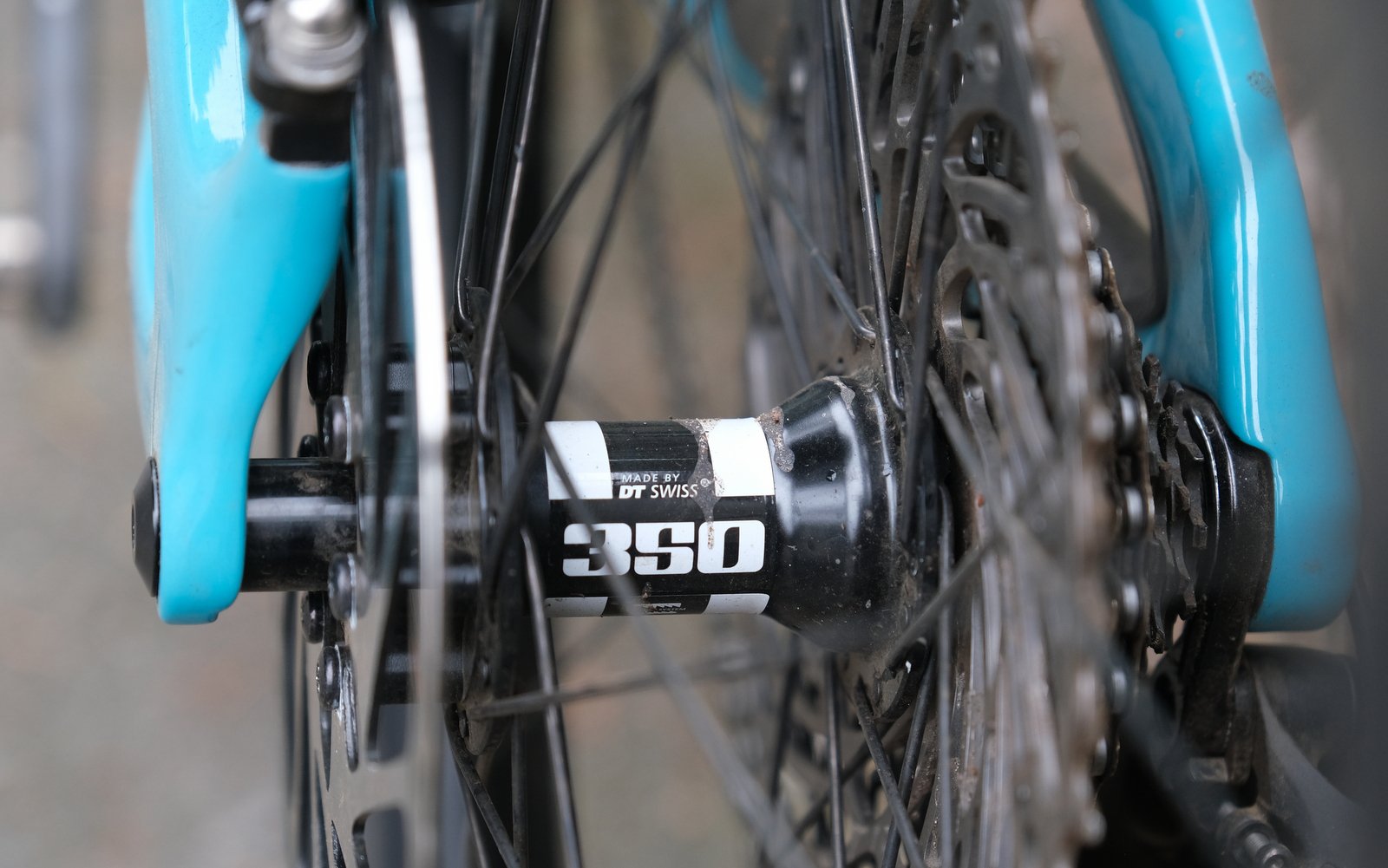
DT hubs always keep me pretty happy.
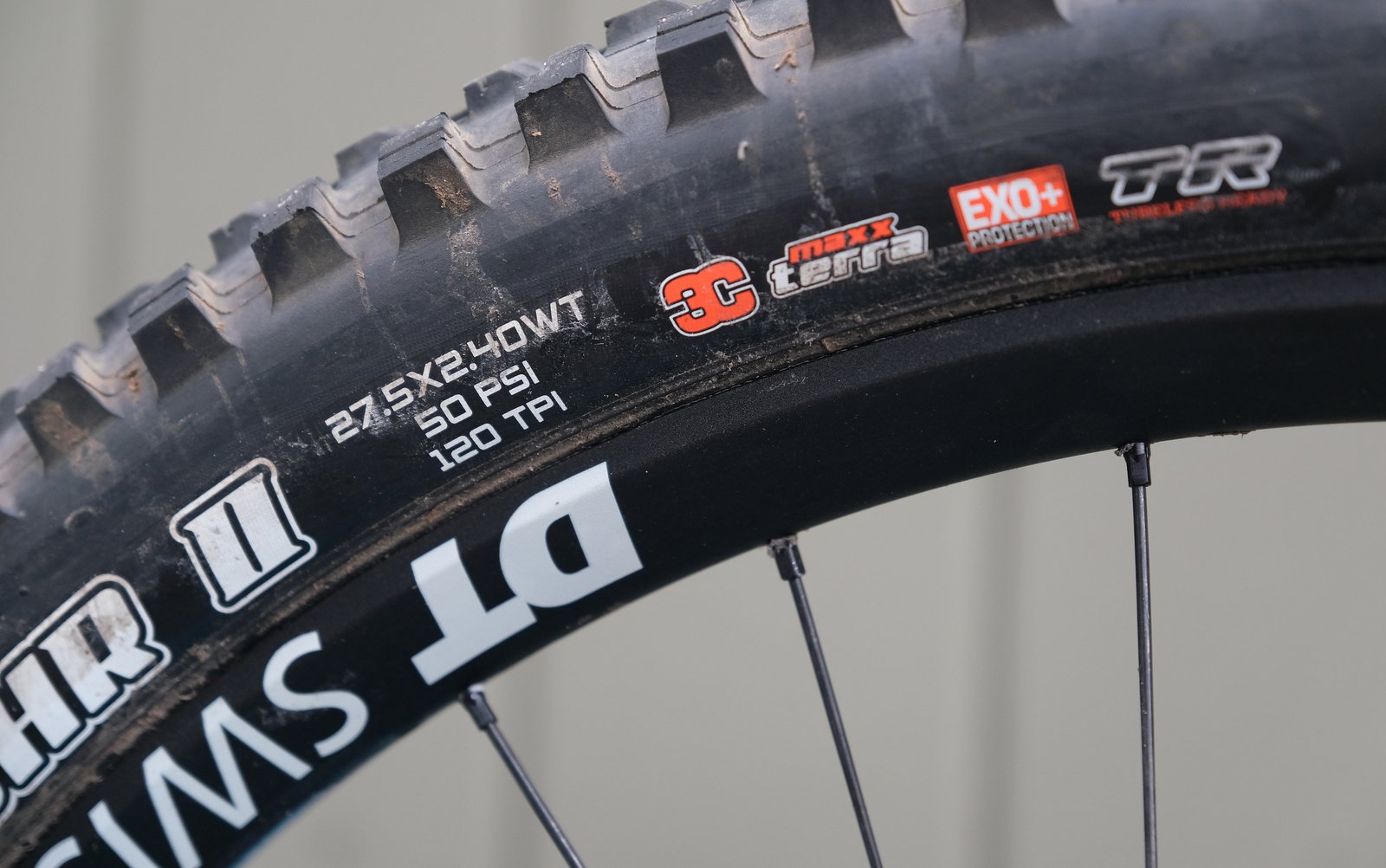
Should one expect carbon rims at this price? I'm not sure it matters.
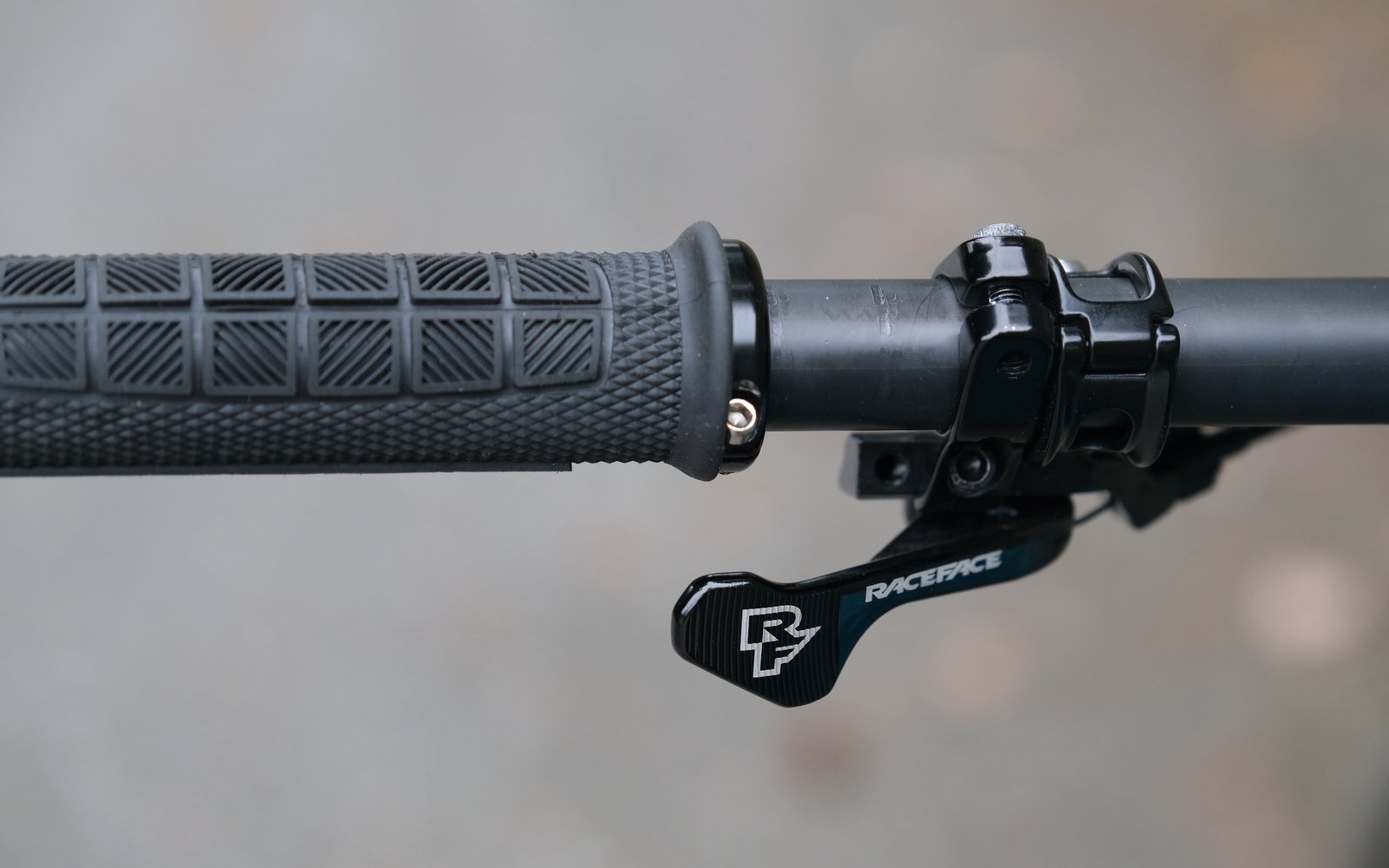
Race Face lever running a Fox Transfer post

Code RSC brakes plus a few battle scars from whomever wrecked the rear tire for me. (I don't think this was me - Ed.)
Uphill
This bike climbed a lot better than I was anticipating. One of the things that I didn't like about the SB55 was that, for me, it wandered a fair amount on steep climbs. All of the other (shorter) testers thought that it was an amazing technical climber, but I had a hard time wrestling it up anything that required some form of climbing skills. This bike was totally different. The front end always felt planted, and it was easy to clean technical climbs. Cheers to steep seat tubes!
Indeed, I almost felt like this bike is more at home on technical, singletrack climbs than on mellow, double track. Stick it in an easy gear, spin your legs and it will find traction up most anything. The steering is a bit floppy at these slow speeds, but as long as you have some flexibility in your line choice, things tend to work out okay.
That's not to say that it wasn't good on those aforementioned double track climbs. There was a remarkable lack of pedal bob for such a plush rear end, and it was pretty much non-existent with the climb switch engaged. However, there's no pretending that you're not pushing a long travel bike up a climb. Especially once the climb flattens out a bit, and you kick down a few gears, the expected acceleration can be slow to appear. As you grind your way up a road, it's pleasant enough, but you'll have some extra time to think about all of the things that are slowing you down compared to a shorter travel rig, and you'll be generally thankful that Yeti specc'd a 30 tooth chainring.

This was a nasty, gloomy, slippery day. I've wanted a photo of Bart's Bridge for a while. This took me 3-4 run ins of sliding past the entry point. Once I was able to line it up, the bike just charged right through. I didn't have it in me for another take.
Downhill
The good news is that it doesn't take very long to realize that adding a few inches of travel is seldom a bad thing when you want to ride a bike down a hill. I was happy to discover that my body and skills hadn't deteriorated quite to the point that the short travel bikes I've been riding recently had suggested.
After playing around for a few rides (quite a few rides, as you'll see below), I found myself hunting old, gnarly lines that I've skipped for the last few months. Indeed, I found myself hunting old, gnarly lines that I've skipped for years, as I've seldom found myself at the top of a climb on such a capable downhill machine.
This theme tends to drift into numerous reviews these days. And yes, larger wheels and slacker geometry have transformed the way that we ride bikes these days. But there's a different type of capability that rears its head when you throw a whole bunch of coil sprung travel on the rear of your bike.
This bike has an ability to find a line for you, where you didn't plan on there being one. It's like when you go horseback riding as a kid, and they just kind of plunk you down on top of some giant animal, and you can pull and push on those damn leather straps until your arms fall off, but that fucking horse is going where it wants to, and you really should just not worry about things because that horse has done this a thousand times and you should just let him get on with it because things will work a lot better if you just let go and don't try to control the situation too much. And once I succumbed to that mindset, things started to work out pretty well.
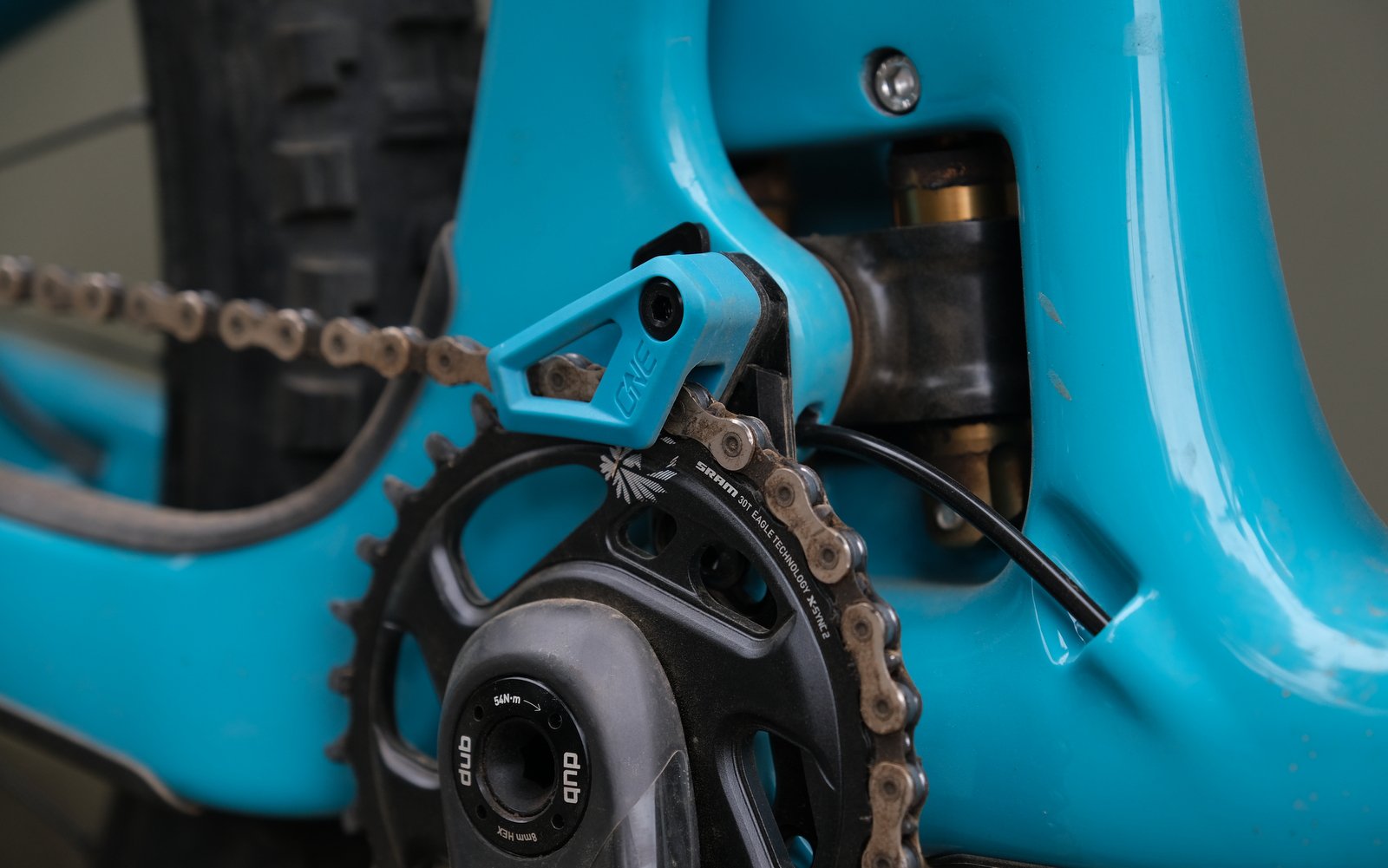
Much is made of these tiny little shuttles. A few mm really can make a difference, apparently.
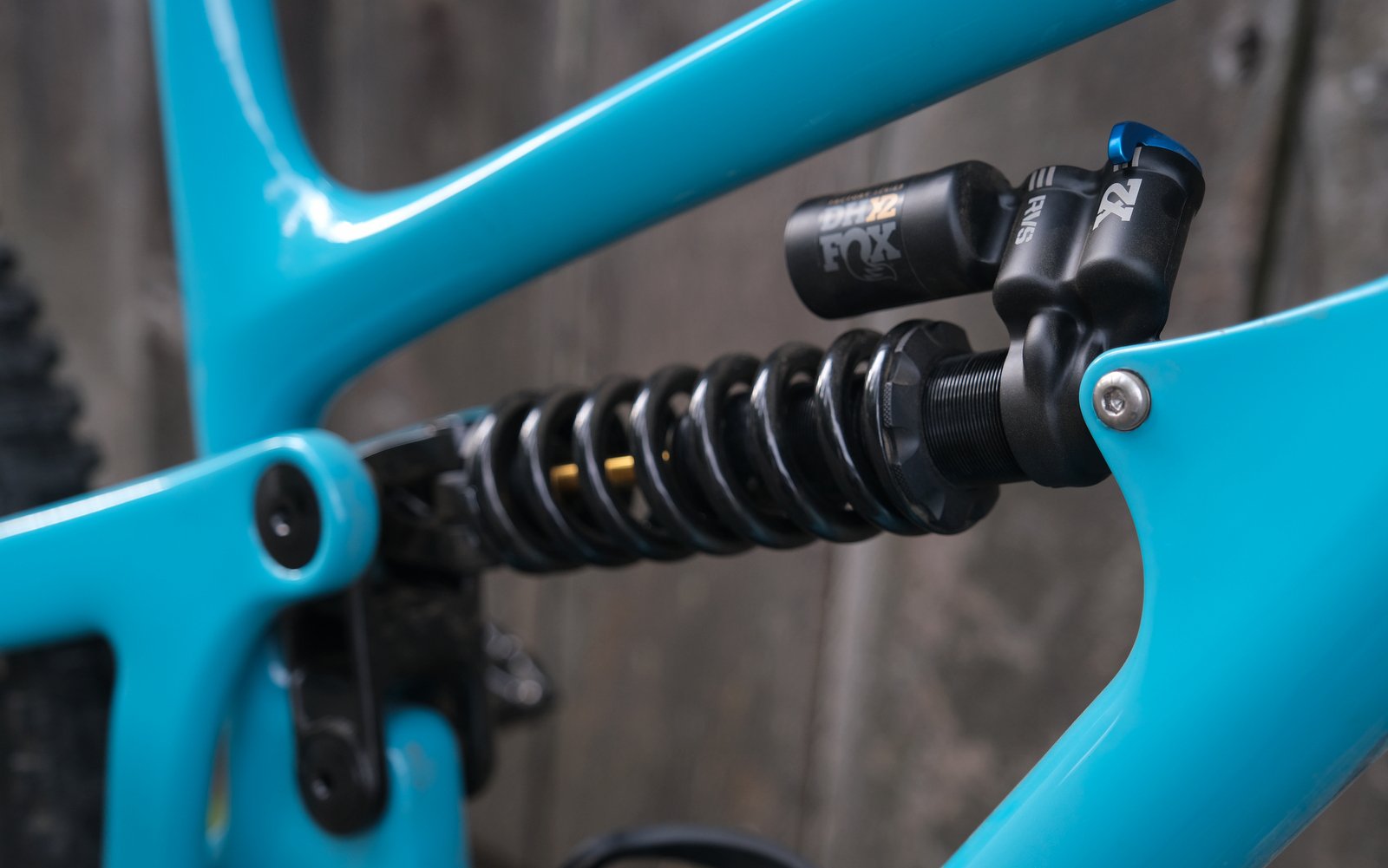
The knee bone's connected to the coil bone.
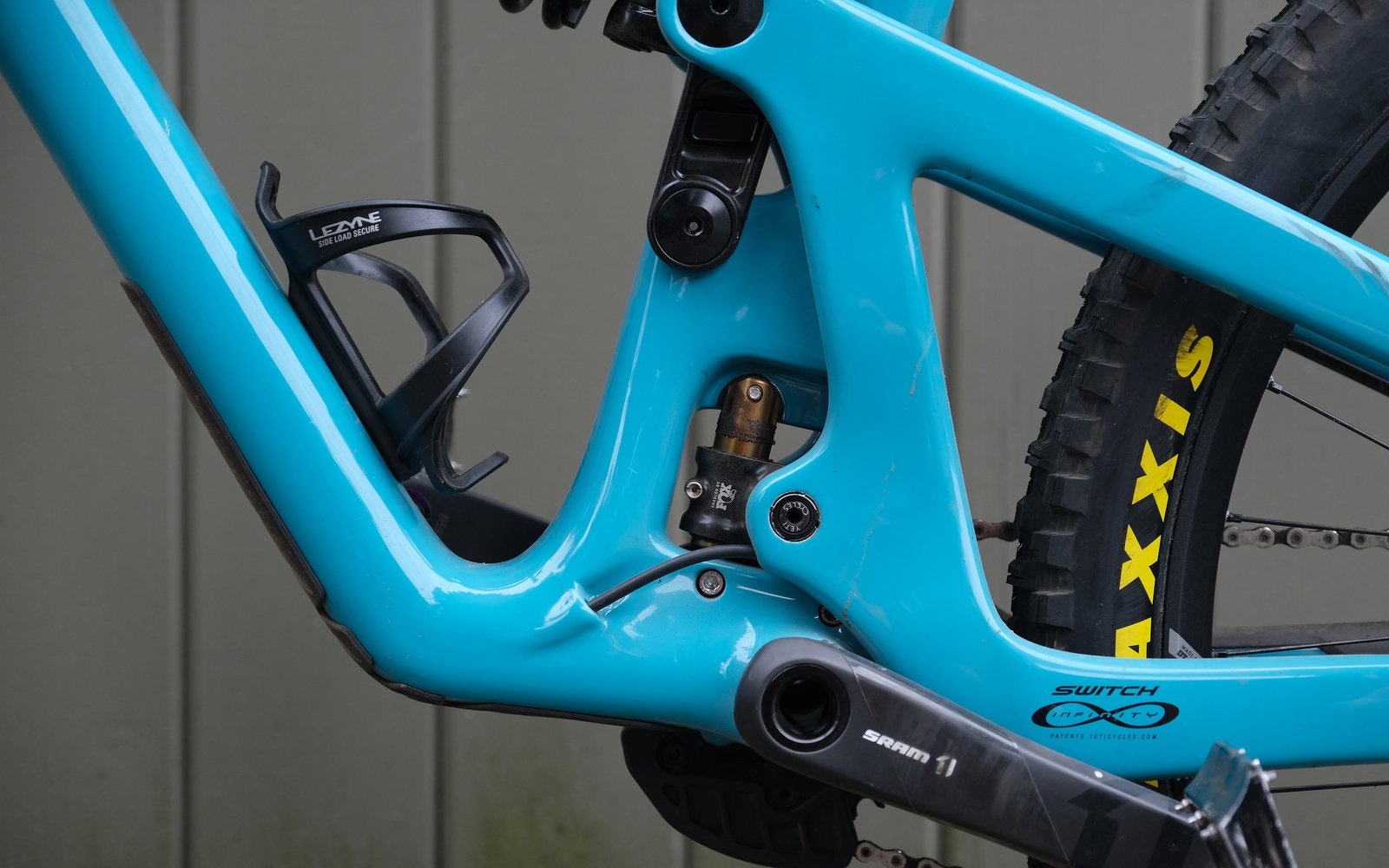
There's a noticeable zig to the zag in front of the bb.
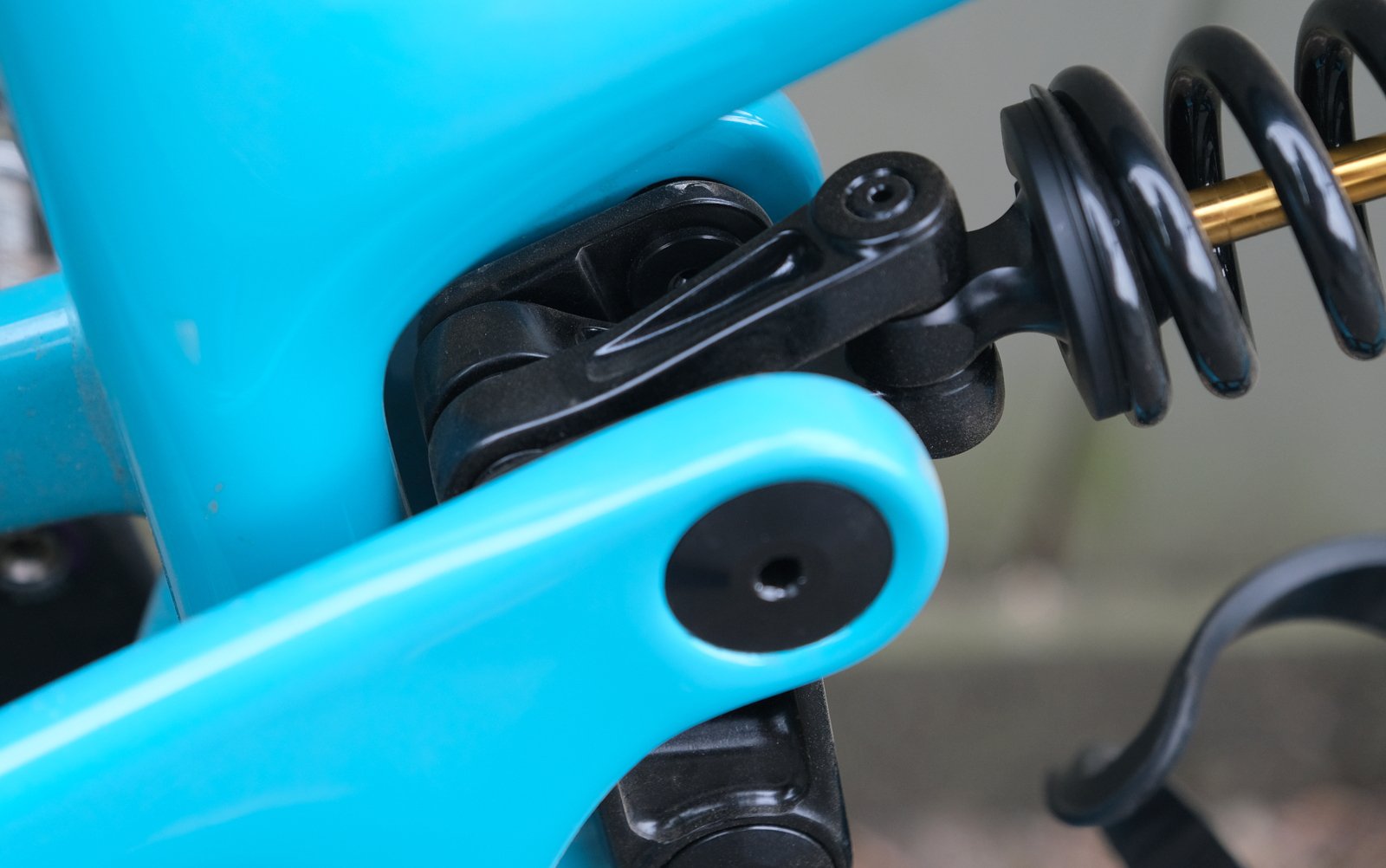
There's a small linkage hidden in behind the upper pivot. This makes coil swaps not a lot of fun.
The rear end excels on fast, repetitive, mid-sized hits (where you can find them on the Shore). You can carry a remarkable level of speed over roots and bumps that might otherwise slow you down. This, and the subdued steering, causes you to straighten the trail out as much as possible. This is definitely not a bike where finesse wins the day. The bike will take you as far as your commitment or levels of trust will allow, and you'll find yourself scoping lines that you probably shouldn't.
I like the Switch Infinity system. At first glance, it seems like a lot of effort to move a pivot up and down a few millimetres. But, whatever the optics, Yeti has created a system that works very well, and that I've enjoyed every time I've ridden it.
As I read back through that SB 5.5 review posted earlier, I was surprised to read this group of sentences that I wrote:
Even with a fair amount more pressure than what Yeti is recommending, I still found that I was consistently using full travel. I played around with air pressures high enough to prevent bottoming, but I did not like what this did to the overall feel of the bike. As bottoming out never seemed harsh or problematic, I reverted to the softer settings. I think this bike could benefit from a smidge more bottom out resistance, either in the form of a leverage tweak or a shock tune or bottom out spacers.
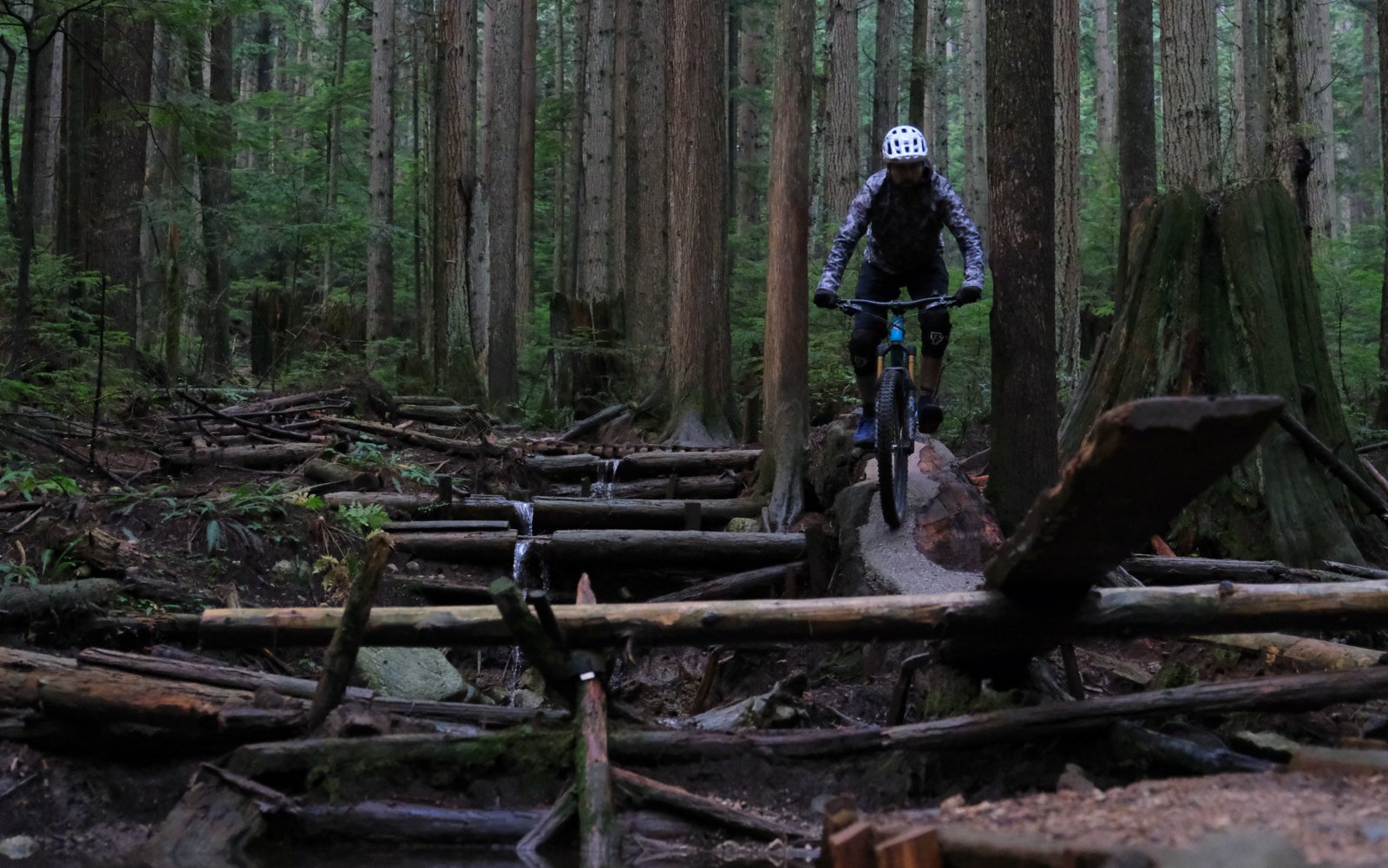
This photo showed up in my POC helmet review, but I'm going to use it here again. Who says this bike can't do precision?
Ignore the air shock specific language in there, and this is almost exactly how I feel about the rear end on this bike. The biggest difference though, is the coil shock, and the challenges that this creates in finding your sweet spot. Even with a stiffer spring than Yeti recommended (25 lbs. heavier), and even with a bunch more HSC than suggested (5-6 clicks), I still felt it was fairly easy to use all of the travel this bike had to offer, and I used full travel, each and every ride. In the end, I found a place where the rear end worked well for the terrain that I was riding, but this was largely on trails that aren't pushing the boundaries of this bicycle. I'm fully confident that you can find a spring rate that will work for you, it just might take a few spring swaps. If I were to make this my bike for the long term, I would plan/hope for a couple of things:
1 - I would aim for less sag than the 32% that Yeti is recommending (maybe even maybe a bit less than the 30% the Fox manual recommends).
2 - I wouldn't be terribly upset if Yeti designed a teensy bit more progression into this rear end. Yeti has increased the amount of progression compared to their air shock based bikes (25% progression is the number that they state, but I don't have a comparable for their air shock based bikes). I think it could stand a touch more.
Counter all of this to the fork, which I ended up running a few psi under recommended settings, and which never came close to bottoming out. I even cracked it open to make sure there were no tokens hiding inside. There weren't (said in your best Ron Howard narration voice).
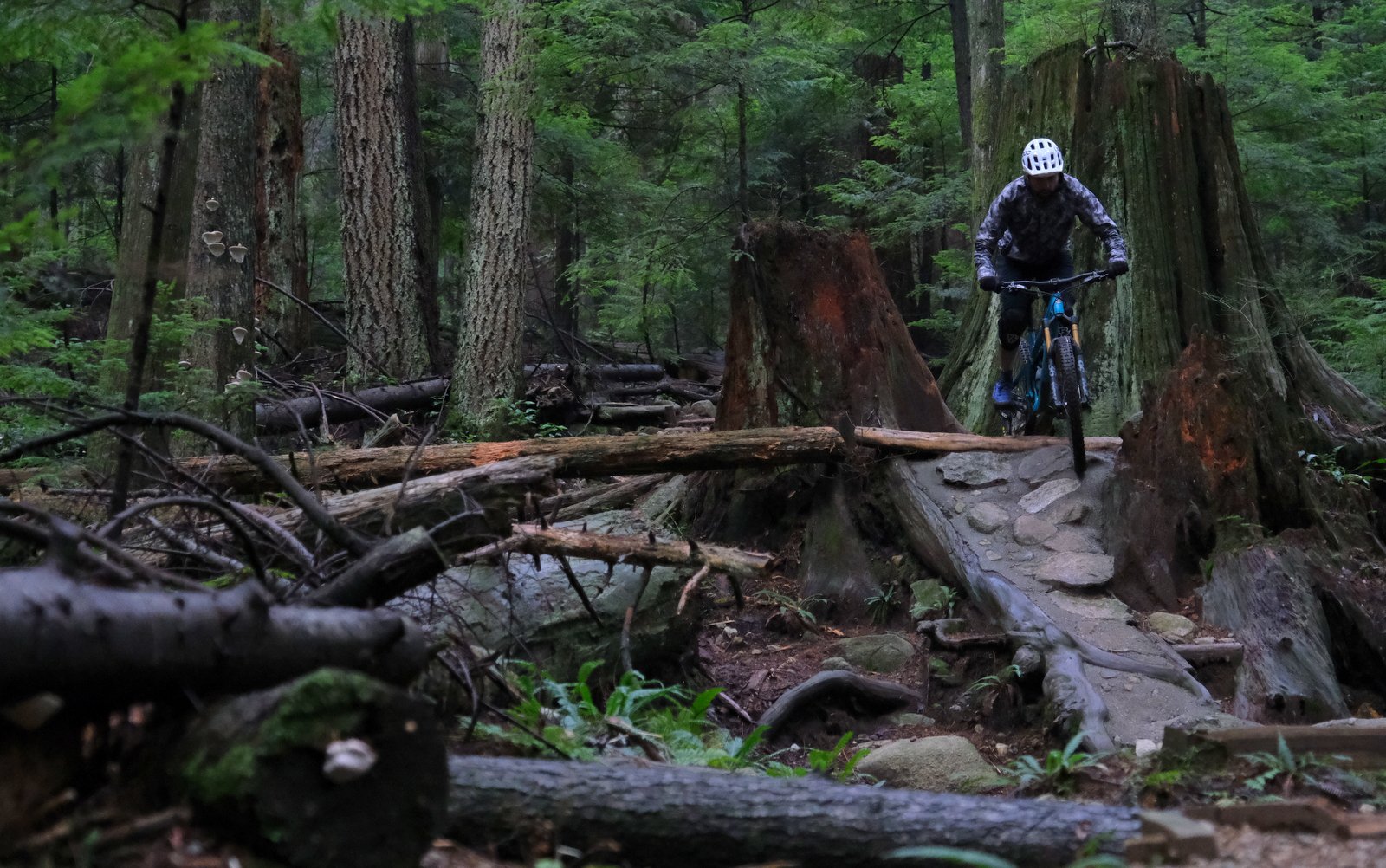
We'll end with another meandering slow roll because why not?
Conclusions
Numerous references to "freeride lives" have been made by many people while discussing this bike. Really, this bike is everything that we were promised by marketers selling us dumpy shit in the early 2000's. It will get you to the top, and it won't give you many excuses on the way down. It can be a bit of overkill on mellow terrain, and while the rear end pedals very well, you're still hauling a lot up to the top. For somebody who shuttles a bit, rides some chairlifts, and also likes to climb to find some out-of-the-way gnar, this could be a really great bike. I kind of wish this bike had shown up in my life 15 years ago, because that's exactly what I needed back then.
For more on the SB165 - click here...
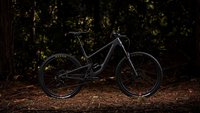
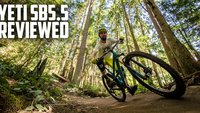
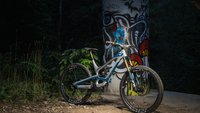
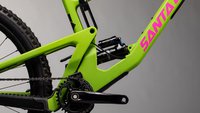
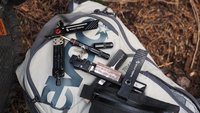

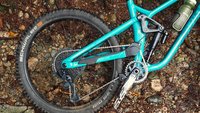
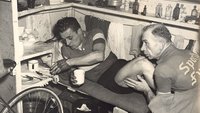
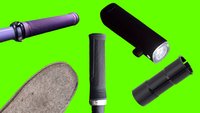

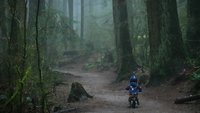
Comments
khai
3 years, 11 months ago
Perhaps one of those progressive springs such as those made by MRP would be just the ticket?
Reply
KavuRider
3 years, 11 months ago
Maybe that Sprindex adjustable rate coil spring could work. Sprindex Adjustable Spring
Sidenote - I would LOVE to take one of these for a test ride. I have a Yeti SB5C that I built up recently and it is possibly the best FS bike I have ever ridden. Its so fast on the descents it's scary. I can't imagine what this would be like.
Reply
Dave Tolnai
3 years, 11 months ago
Agreed. I had a note in there about the Sprindex at one point and time, but it vanished somehow. I definitely would have appreciated the ability to fine tune the spring rate a bit.
Reply
Brad_xyz
3 years, 11 months ago
I would love to hear a North Shore ride comparison between this bike and the new Specialized Enduro. Other than the obvious 27.5" versus 29" wheel size difference it would be interesting to know their relative strengths and weaknesses.
Reply
Cam McRae
3 years, 11 months ago
We do have both so we should be able to make some observations there. It's on the list.
Reply
Brad_xyz
3 years, 11 months ago
That would be awesome!
Reply
[user profile deleted]
3 years, 11 months ago
This comment has been removed.
LWK
3 years, 11 months ago
You touch on it at the end of the review but if you guys are looking at a few of these types of bikes some general discussion of where/why owning these sort of bikes makes sense would be great.
I seriously considered this bike for the upcoming season. But actual "mountains" requires a committed weekend for me to access and I have a modern DH bike for bike parks. And so I went with a more AM style bike. If I lived in the Van - Pemberton area (or similar) and/or didnt have a modern DH bike, I'd be all over this.
Reply
Brad_xyz
3 years, 11 months ago
Yeah, I don't own a downhill bike, I live in North Vancouver and I like to take my bike to the park at least a couple times a year and my legs are not so springy anymore so I'm definitely in the category that these bikes (the SB165, Spec Enduro, Slayer etc.) are aimed at. I can totally see where these would be too much bike for a lot of terrain and a lot of peoples riding preferences but for my 'single, do it all bike' these check all the boxes, especially now that they don't actually peddle uphill that bad.
I'm still not a good enough rider that I ever end a downhill run on my local terrain wishing I had less bike.
Reply
Reed Holden
3 years, 11 months ago
Not much note made to the wheel size and ride characteristics. These days you can get 170/160 29ers a dime a dozen and these are generally considered the more capable bike. Here we have a 27.5 sled with a coil. I can put a coil on any 29er. The mega tower has that as an option.
Any comment on why you like this one over a similar 29er or maybe you wouldn’t?
Reply
Dave Tolnai
3 years, 11 months ago
Fair point. I haven't ridden the latest incarnation of the longest travel Yeti 29er (SB150) but I have ridden the SB5.5 a fair amount. If it were my choice, that would be the bike I would go with. It's probably a bit better for all around trail riding, rather than shuttle/lift/gnar.
It's pretty hard to isolate wheel size, so I try to speak about it as a package instead. I mean, you might gain something on the smaller wheel that you then hand back on the slacker head angle. It's a package. I tried to talk about this a bit in the review but I couldn't find the words. It's like...the long travel 29er is going to go faster in a straight line and on smoother trails. The longer travel 650 bike is going to make the hardest parts of the trail a bit easier. That's not a hard and fast rule, but if I were comparing the SB165 and the SB5.5 that is how I would best sum it up.
Reply
Please log in to leave a comment.